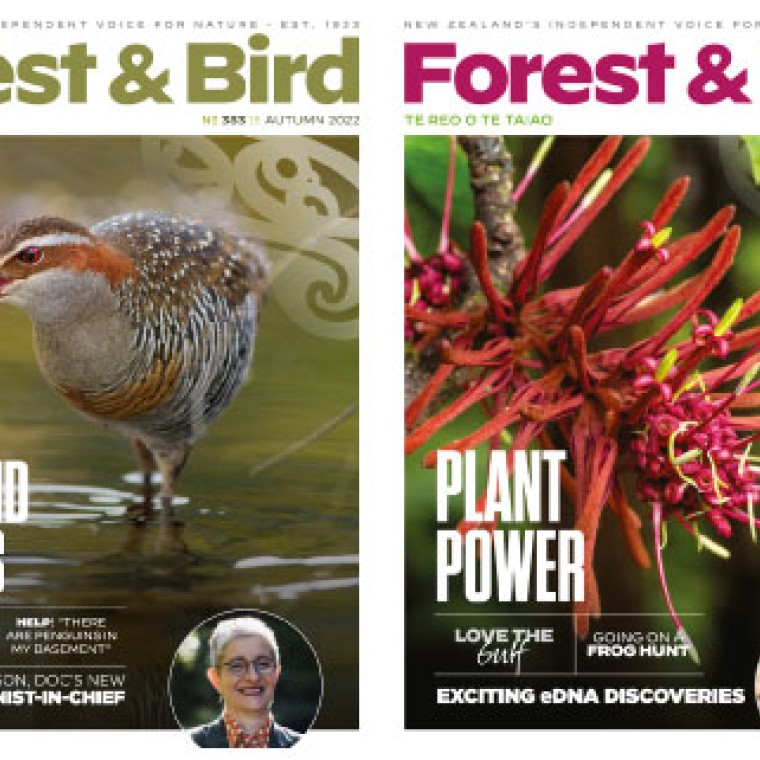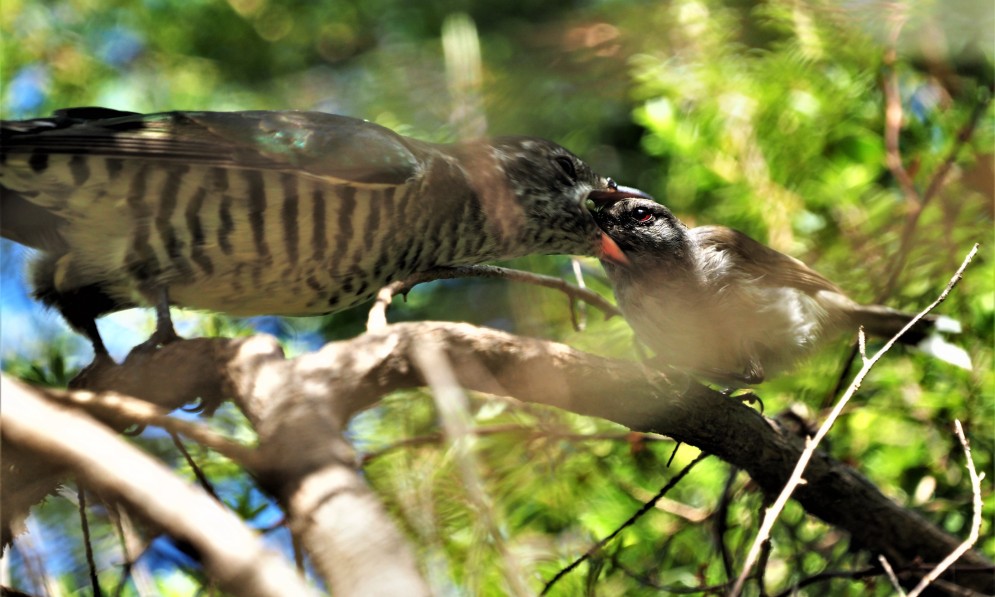The trick to successful nest parasitism is to not unduly harm one’s hosts, as our visiting trickster cuckoos have learned over many generations. By Ann Graeme
Forest & Bird magazine
A version of this story was first published in the Summer 2023 issue of Forest & Bird magazine.
Riroriro, the grey warbler, is trilling a soft sound of “peculiar sweetness” in my garden, as Sir Walter Lawry Buller would say. Riroriro’s song proclaims his status. He has a territory, and it offers food and a nesting place to his mate.
This morning, I also heard pīpīwharauroa, the shining cuckoo, singing his signature tune – tzeet, tzeet, tzeet, tzeet, tzeet – ending with a downbeat whistle. He has no territory to defend, no nest to build, no chicks to feed. All he offers to his mate is an egg-fertilising service.
The grey warbler is a relatively recent arrival from Australia. This history is reflected in its nest, a dangling, pear-shaped structure with its entrance from the side, an adaptation giving protection from predators like snakes. The shape makes the nest less accessible to rats and cats.
But the nest is not out of reach of the shining cuckoo. Lurking in the bushes, she watches and waits until it is left untended. Then, like lightning, she swoops in, lays her egg, grabs the riroriro egg and flies off with it in her beak.
When her egg hatches, the cuckoo chick, still blind and naked, will evict any remaining riroriro eggs or chicks. It will shovel them, one by one, on to its back and heave them out of the nest.
Now the shining cuckoo chick will have the undivided attention of its foster parents, the hapless riroriro. They are going to have to work hard to catch enough insects to feed the huge, demanding imposter.
What despicable behaviour! That cheating, underhand, lazy cuckoo! Those noble, doughy little riroriro!
Whoa! That is our righteous indignation, but nature is indifferent to human morals. Natural selection rewards winners, and, for millions of years, the relationship between the shining cuckoo and the warbler has evolved and endured and been successful.
The trick to successful parasitism is to not unduly harm one’s hosts, for their decline will be your demise.
The shining cuckoo is a migrant, and it arrives in spring, when the riroriro have already reared their first brood of chicks. The cuckoos may parasitise about half of the second clutches of nests, but enough riroriro chicks will survive to maintain a healthy population. In fact, it’s the cuckoo population that is at greater risk of decline.
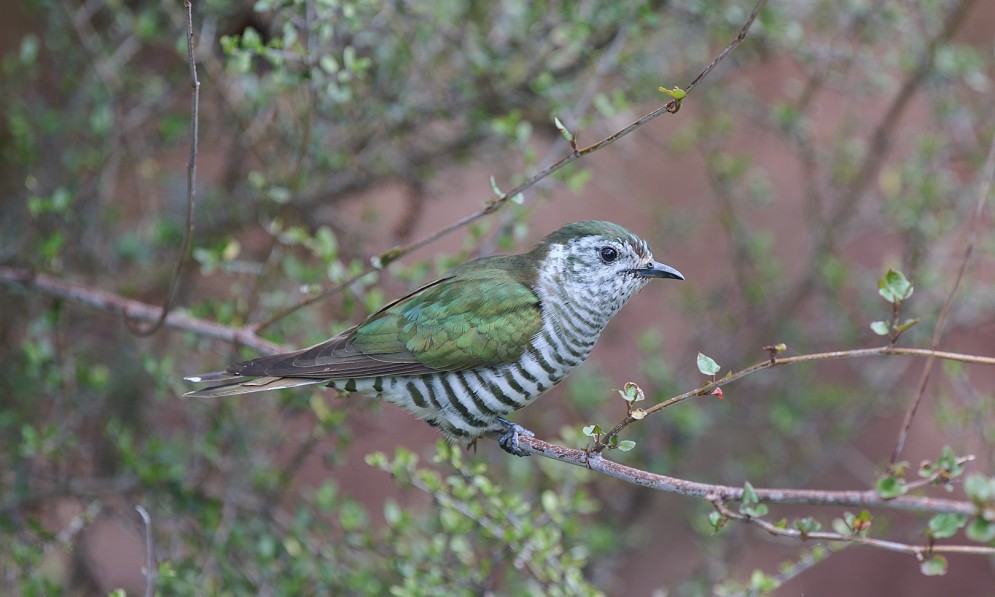
Pīpīwharauroa shining cuckoo. Image Craig Mckenzie
The pīpīwharauroa spends the winter in the Solomon Islands and the islands of Papua New Guinea. Their habitat, and that of countless other species, is the tropical rainforest. There it is being destroyed and replaced with the wildlife deserts of palm oil plantations that feed our insatiable appetite and our growing population.
Even when a shining cuckoo reaches Aotearoa, there are new dangers. Many people meet their first pīpīwharauroa when it’s dead. Cats often catch them, and the birds have an alarming propensity to fly into windows. You can avoid this by using window decals, semi-transparent transfers that, from the inside, are barely visible to the human eye, yet are bright and bold to the bird outside.
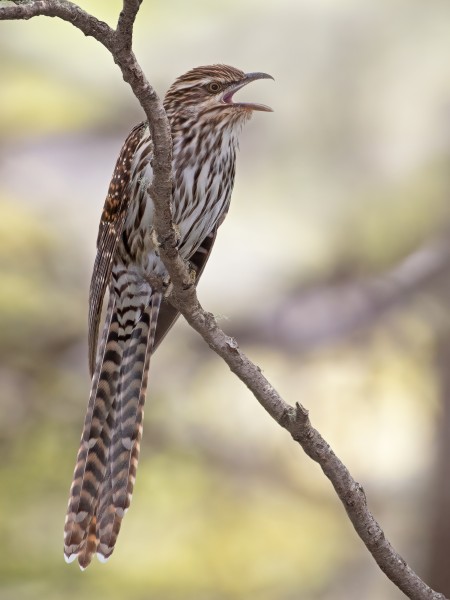
Koekoeā long-tailed cuckoo. Image Mike Ashbee
Our other cuckoo species, koekoeā, the Pacific long-tailed cuckoo, is much larger than the shining cuckoo and seen much less often. It too arrives here in spring from the Pacific Islands, and, if you hear its harsh screeching, look for its long-tailed silhouette flying high above.
The bird will be going to the forests to seek out the nests of its chosen foster parents, pōpokotea whiteheads in the North Island and mohoua yellowheads or pīpipi brown creepers in the South Island.
Brown creepers, whiteheads, and yellowheads are small insect-eating birds that belong to a family found only in New Zealand. These three species alone host the cuckoo, making koekoeā an endemic species!
In contrast, our shining cuckoo is a sub-species. Other sub-species of shining cuckoos find various hosts in other places, including Australia and some Pacific Islands.
Back in the forest, koekoeā is on the hunt for nests, but, being too big to hide among the leaves like the shining cuckoo, it is often mobbed by smaller forest birds. Perhaps they are aware that it doesn’t just take an egg from its chosen host but eats the eggs of many forest birds too.
Koekoeā also puts a single egg in its host’s nest (this task may be easier as pōpokotea and pīpipi build cup-shaped nests), and the chick ejects the homeowner’s eggs and chicks.
And, like the shining cuckoo, its parasitic relationship has been disturbed. The long-tailed cuckoo’s endemic host populations have shrunk, first because of forest clearance and now because of predation by rats, cats, stoats, and possums.
Cuckoos are the species best known for fobbing off their family responsibility, a behaviour more properly called “brood parasitism”. But they are not the only ones. Brood parasitism has evolved in seven different bird families, including songbirds and ducks.
Building a nest and rearing chicks is hard work, as the little riroriro parents could tell you. If you can trick someone else into doing it, you will have fulfilled the need to reproduce and have more time to forage and lay more eggs.
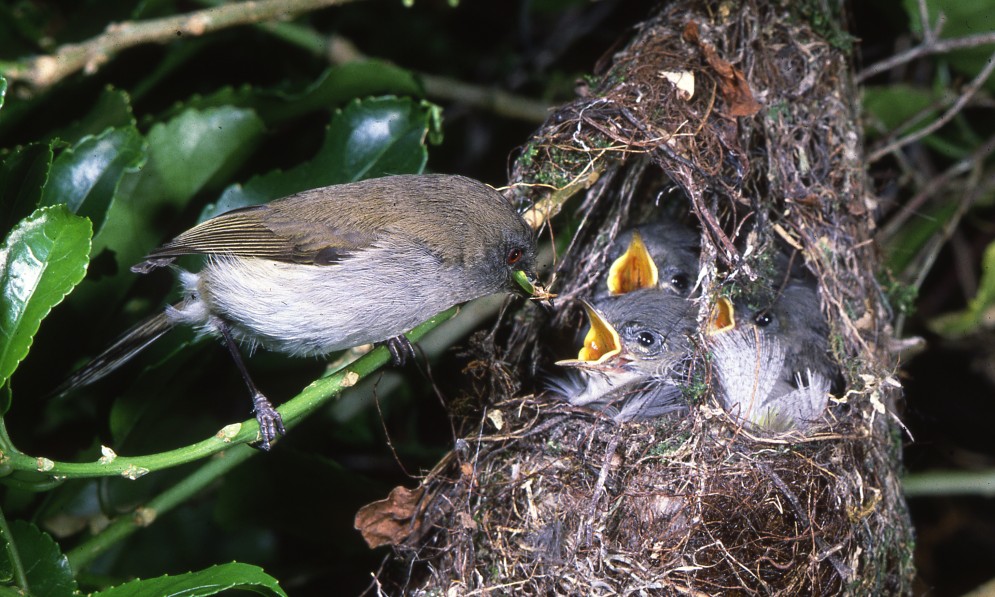
Grey warbler nest. Image Ngā Manu Images
It seems a win-win behaviour, yet it has only been adopted by about 1% of bird species. There are costs, and one of biggest may be the availability and gullibility of suitable hosts. It takes time for a cuckoo to scout out a potential nest at the right stage of incubation and find an opportunity to slip in an egg, unseen by the owners.
And not all birds are easily deceived. Pīpipi brown creepers scrutinise and throw out about half of the eggs the long-tailed cuckoos lay in their nests. On balance, it looks as though in nature, as in human society, there is no free lunch.
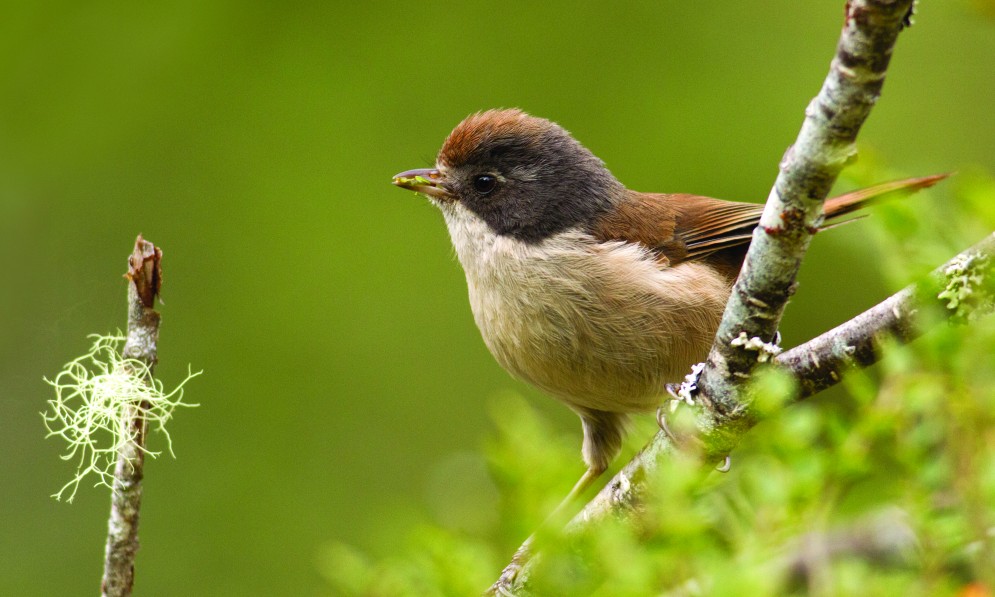
Pīpipi brown creeper. Image Paul Sorrell
